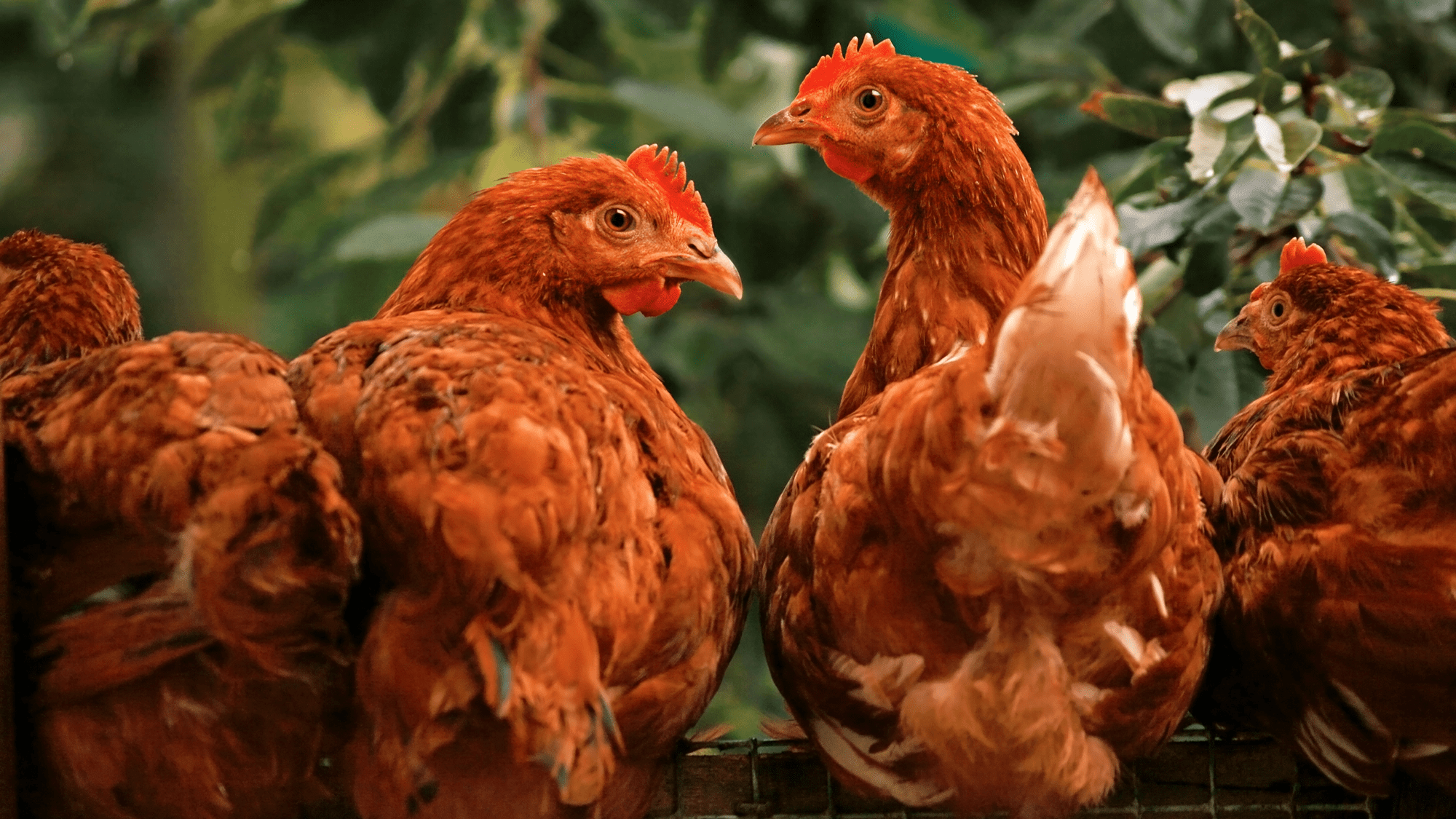
Chickens remain a critical food source for much of the world and are a healthy source of complete protein.
Deposit Photos
Emotions are so hot right now. They took on a new form in this summer’s blockbuster Inside Out 2 and stress is so contagious that our dogs may feel it. Now, it’s some of our favorite feathered friend’s turn. Hens fluff their head feathers and “blush” to express different emotions and levels of excitement. The findings are detailed in a study published July 24 in the open-access journal PLOS ONE and offer insight into the emotional worlds of one of the planet’s most ubiquitous birds.
The sentience question
For humans, facial expressions are an important part of how we get our emotions across to others. Mammals including dogs, cats, horses, mice, and pigs, and have shown evidence of similar signals of emotions.
In birds, this has been a more open question. They can generate facial expressions by moving their head feathers and flushing their skin, but scientists are not sure if this is how they express emotions.
“Although long debated, there is now a consensus that birds are sentient beings: that is, capable of experiencing their life events and perceiving them subjectively (e.g., suffering, pleasure),” Aline Bertin, a study co-author and ethologist at the Institut national de la recherche agronomique (INRAE) in France, tells Popular Science. “As such, it has become crucial to better understand their emotional world, particularly in order to improve the quality of life for the countless domestic birds raised for human consumption, conservation, or leisure, but also to shed new light on the evolutionary origins of sentience.”
[Related: Why you should build a swing for your chickens.]
Sentience is the capacity to have feelings. A 2015 study found that birds possess similar neurobiological circuits to mammals that can convey positive emotions. However, the question of whether or not avians can experience these emotions stayed open. When Bertin and her team uncovered that parrots have facial markers of emotions, she and her colleague Cécile Arnould decided to take a closer look at domesticated chickens (Gallus gallus domesticus).
“[They’re] the most widespread avian species on Earth due to its farming and increasingly present in our gardens,” says Bertin. “It is a bird we think we know, but in the end, we still know very little about the range of emotions they can experience and how they express them.”
Rosy pink to deep scarlet
In the study, the team recorded 18 female domestic chickens from two breeds, while they performed routine behaviors on a farm in France. They also filmed the birds while they were caught and held by a human and while they were rewarded with a food they like.
They analyzed the position of their facial feathers and the color of the exposed skin on their faces in seven contexts. These contexts had varying levels of emotional valence–how pleasant or unpleasant an experience is–and differing levels of excitement. Birds will preen their feathers when they are relaxed and content. If they receive rewarding food, they are generally excited and appear happy. Being captured is also exciting, but typically more frightening than joyful.
They found that the position of the head feathers and the color of the skin varied between these emotional contexts. Their fluffed head feathers were primarily associated with a state of contentment. Blushing indicated that they were either positively excited or fearful. The hens tended to have redder skin in situations associated with excitement and in ones that caused negative emotions. In situations that sparked both excitement and positive emotions, they had a more intermediate skin redness.
“We did not expect to observe such subtlety in the variations of skin color depending on the emotional situations,” says Bertin. “We can see a clear gradation between calm situations characterized by light skin, pleasurable situations characterized by redder skin, and situations linked to a negative experience like fear with scarlet skin. “
Over the course of several weeks, the team was also surprised by the chickens’ sensitivity to the slightest events in their environment. This shows that blushing can convey subtle emotional changes.
“Their skin changes color within seconds at the sight of a butterfly, the bark of a dog, or a fruit falling from a tree,” says Bertin. “Sometimes, we even felt that they perceived things we couldn’t even see!”
A world without chickens
The team is currently working on reanalyzing the extent to which this rapid change in skin color plays a role in their social relationships. They believe that it could be involved in dominance-subordination relationships connected to their access to resources. It also could help influence their approach-avoidance behaviors.
“For instance, you wouldn’t approach a person who looks slightly angry (with somewhat red skin) in the same way as a person with a calmer expression,” says Bertin.
[Related: Why chickens probably crossed the Silk Road.]
These findings open up a window into the emotional experiences of domestic birds, which could improve conditions for farmed poultry. Humans slaughter an estimated 74 billion chickens every year, and that number is expected to jump to about 85 billion annually by 2032. Poultry remains a critical food source for much of the world, as a healthy source of complete protein.
“Imagine for a moment what their daily life would be like without chickens. These animals feed the entire planet with their eggs and meat. Not to mention the use of albumin in the medical field, food for your pets, and many other uses,” says Bertin. “Humanity should have a very respectful view of these animals that are part of our daily lives without us realizing it and that we could not do without at present.”
>>> Read full article>>>
Copyright for syndicated content belongs to the linked Source : Popular Science – https://www.popsci.com/science/chickens-blush-emotions/